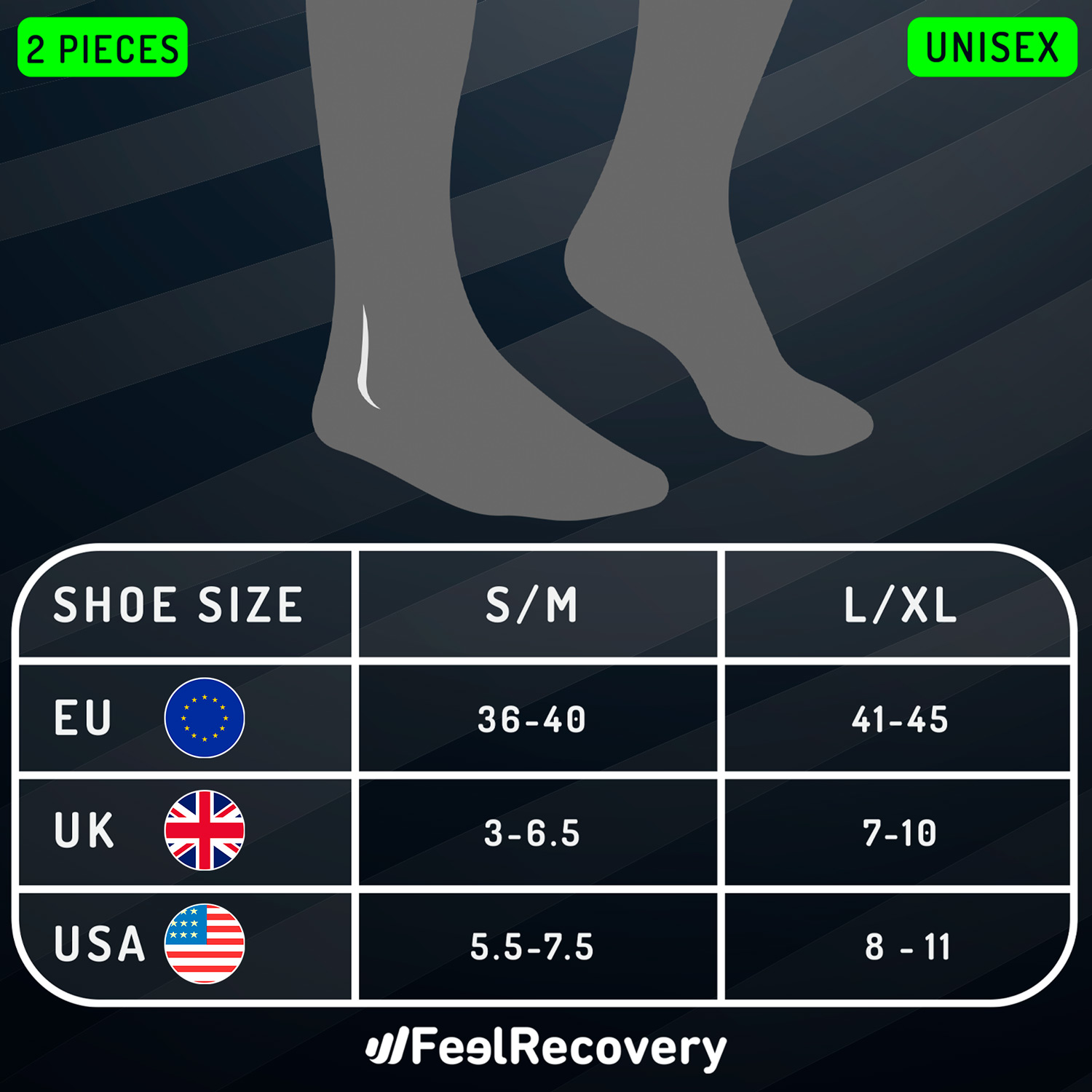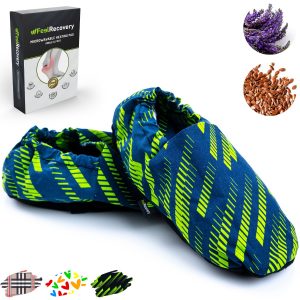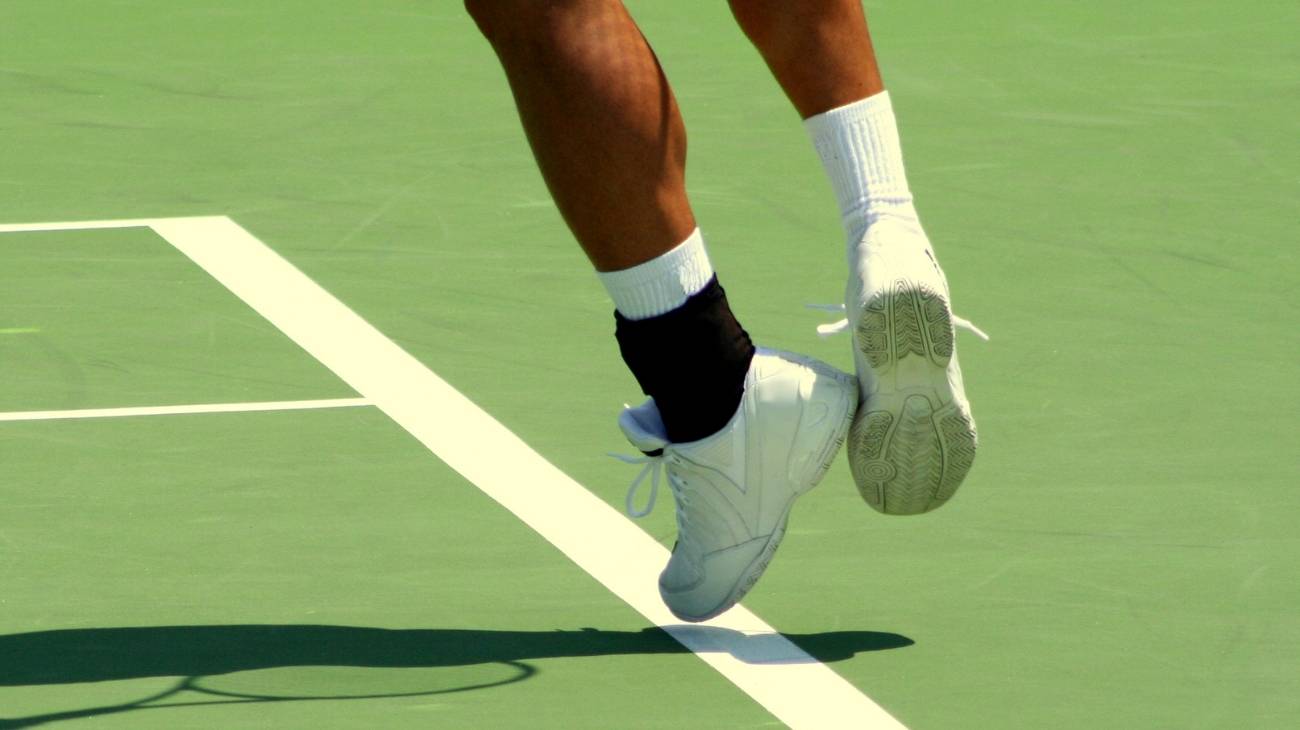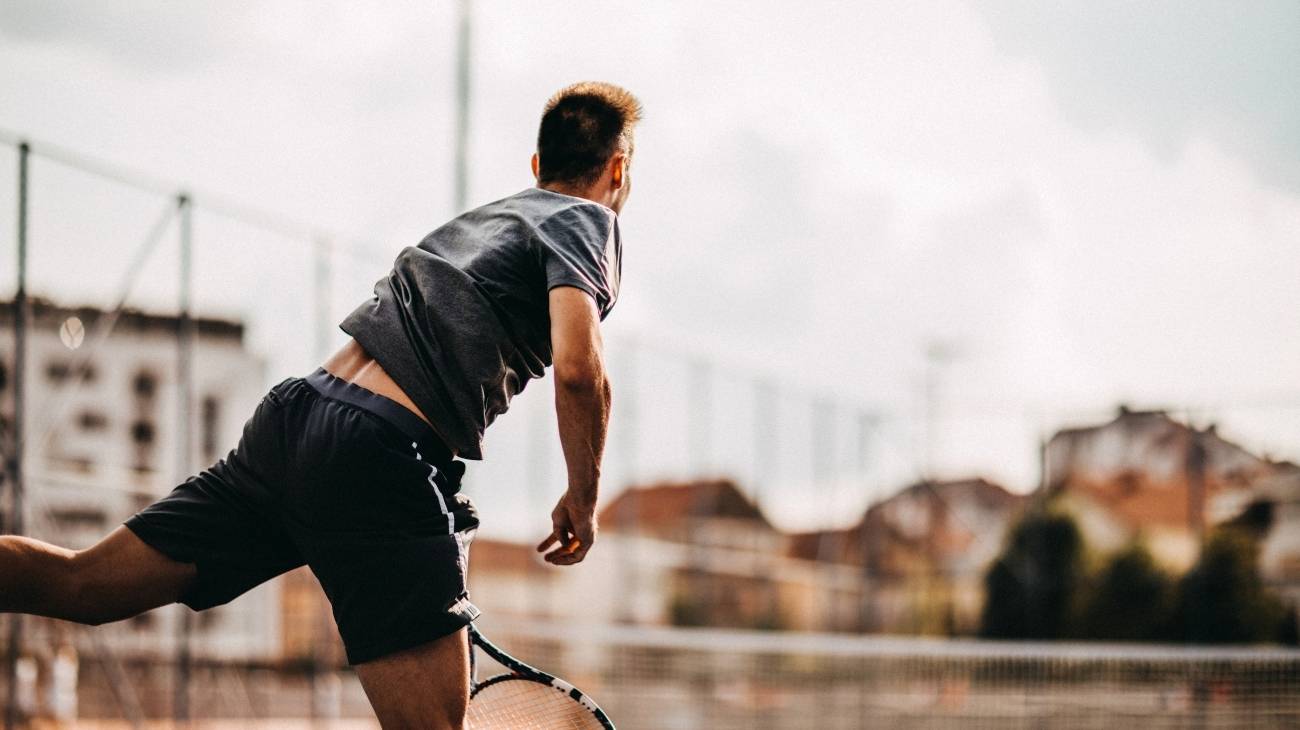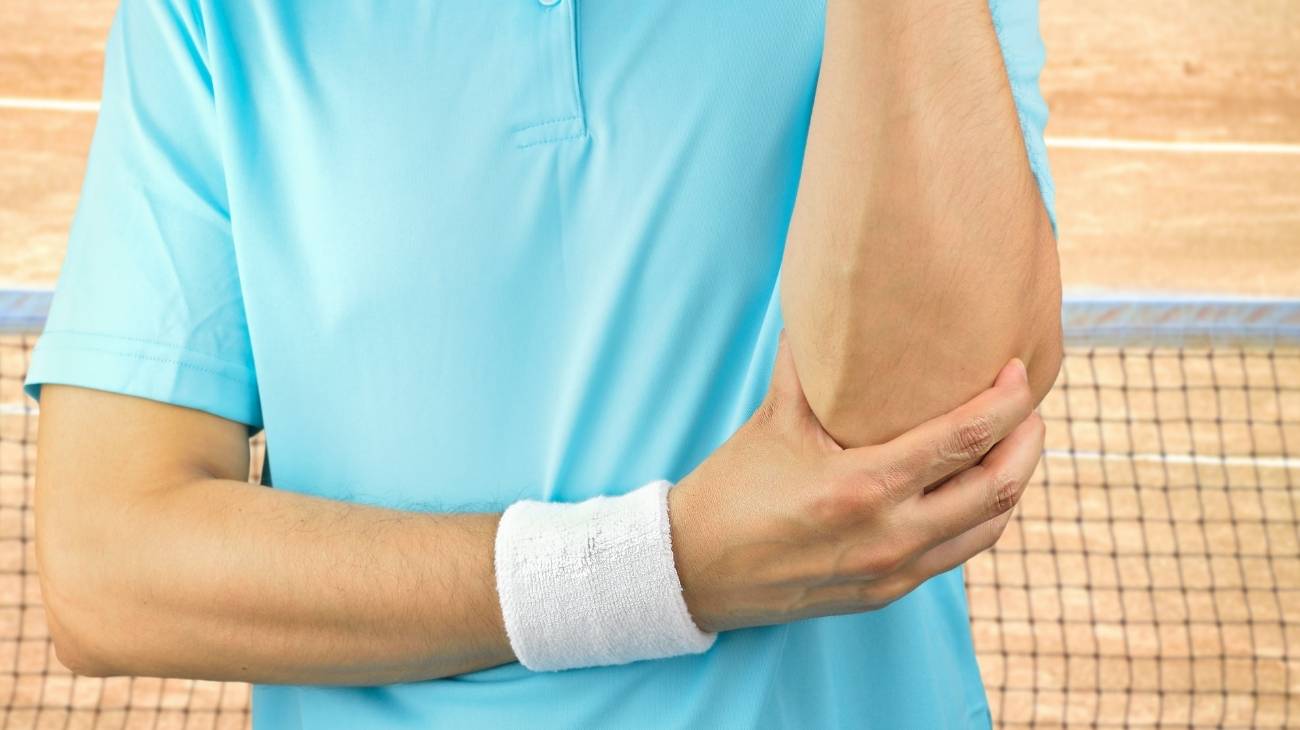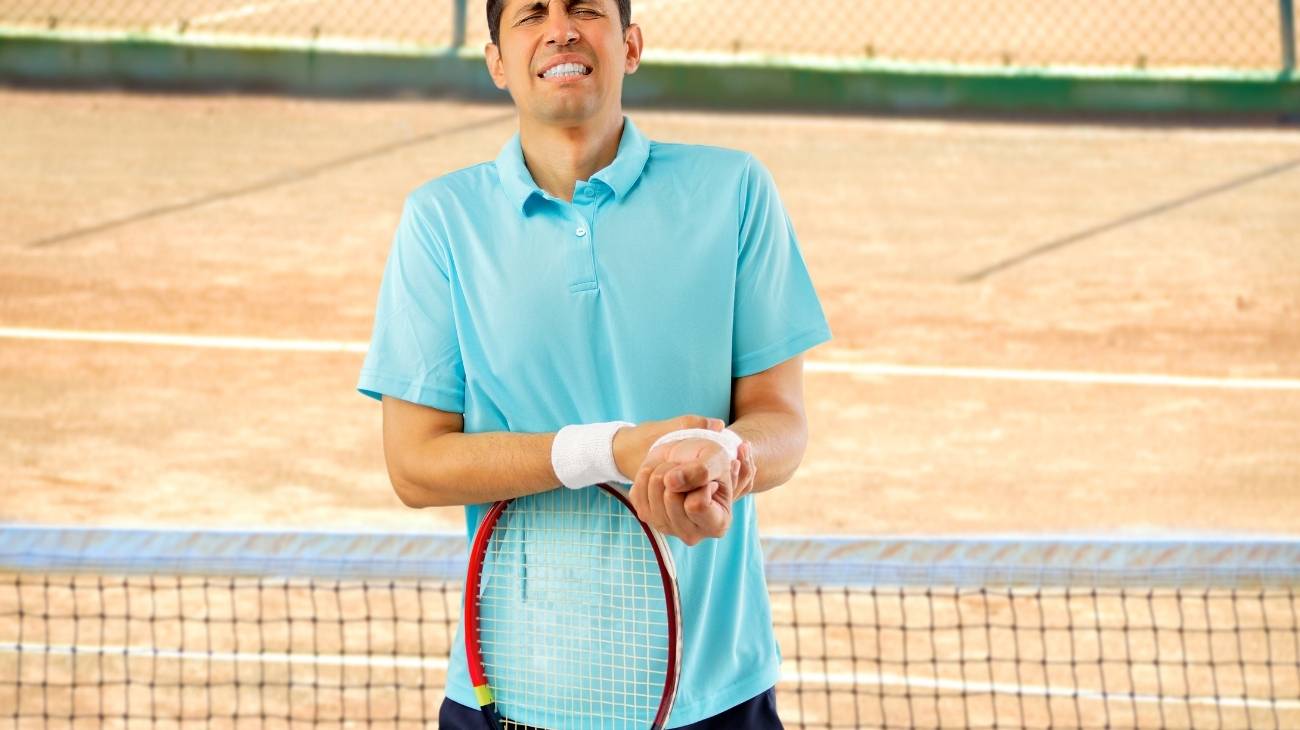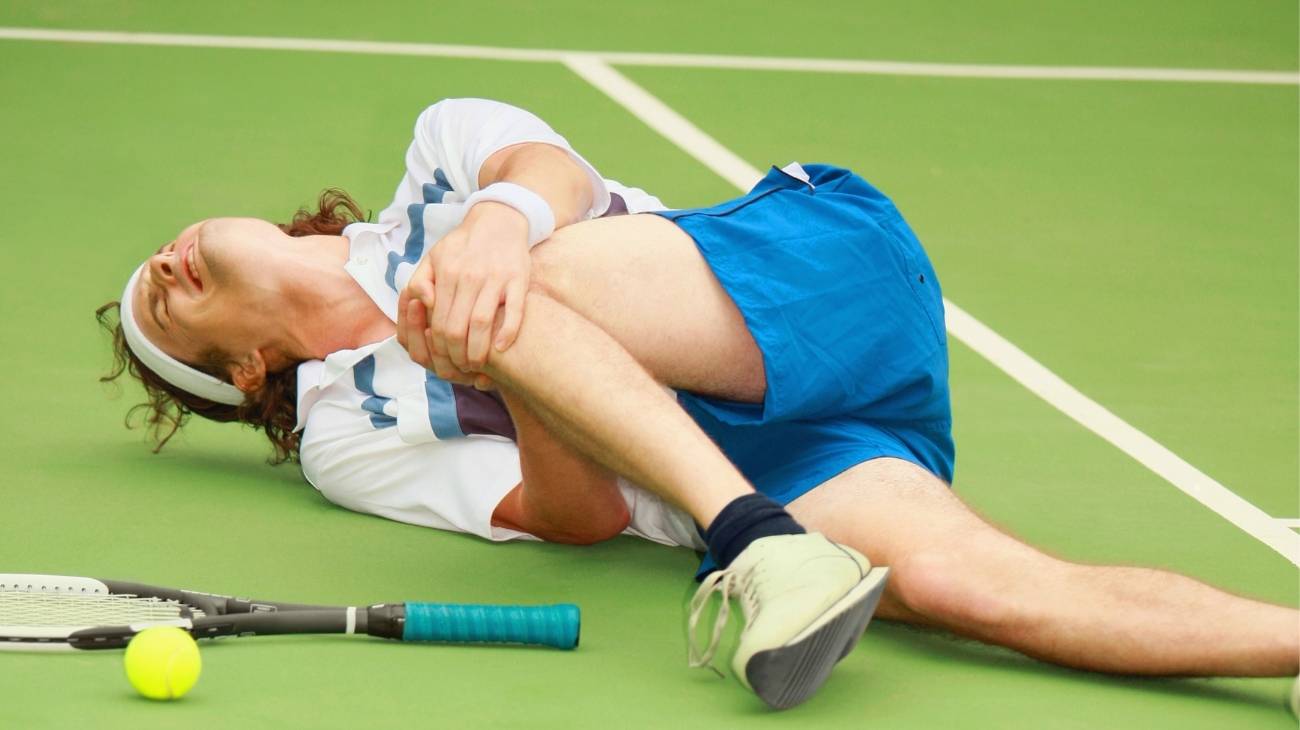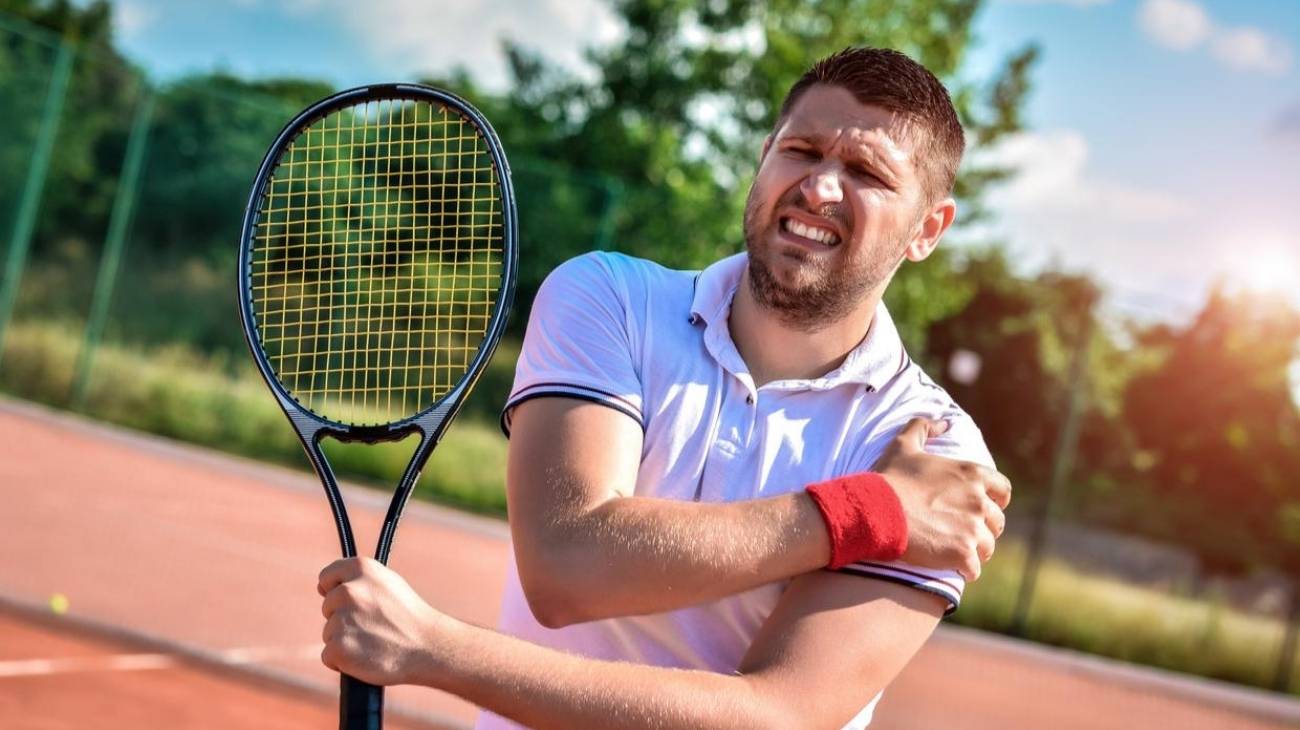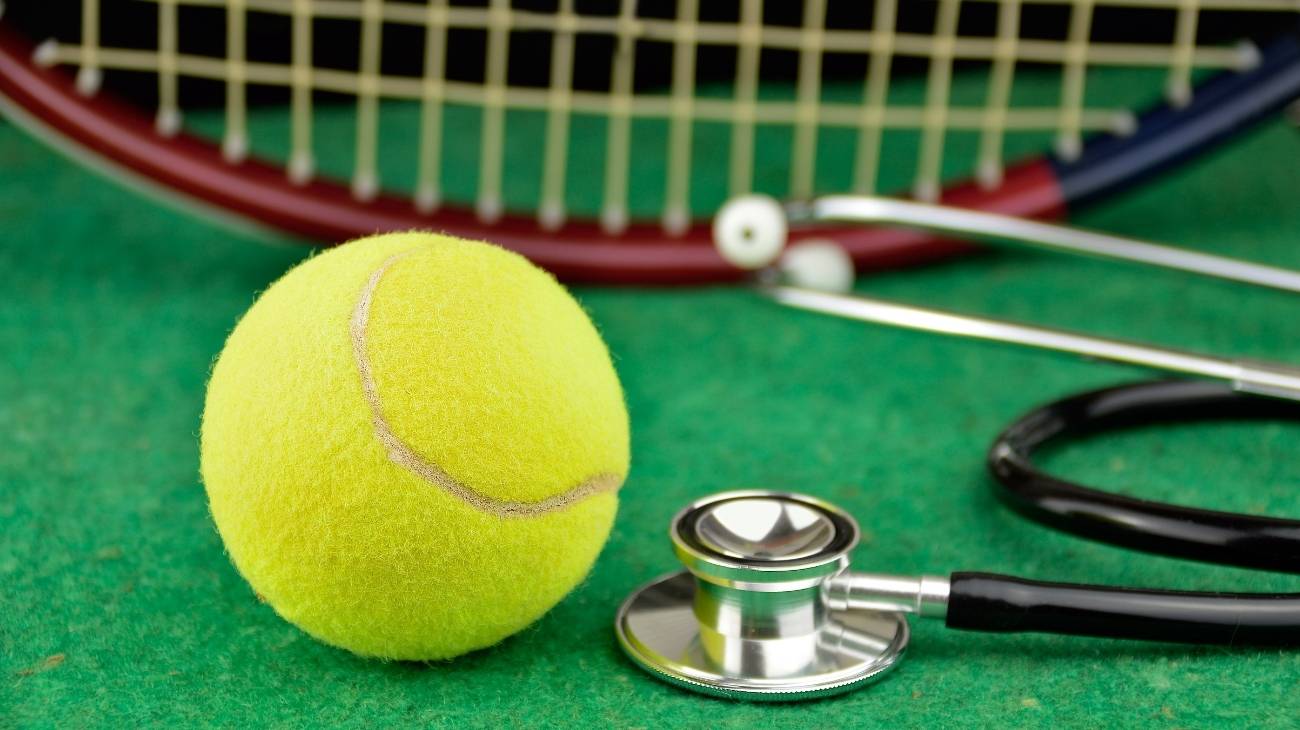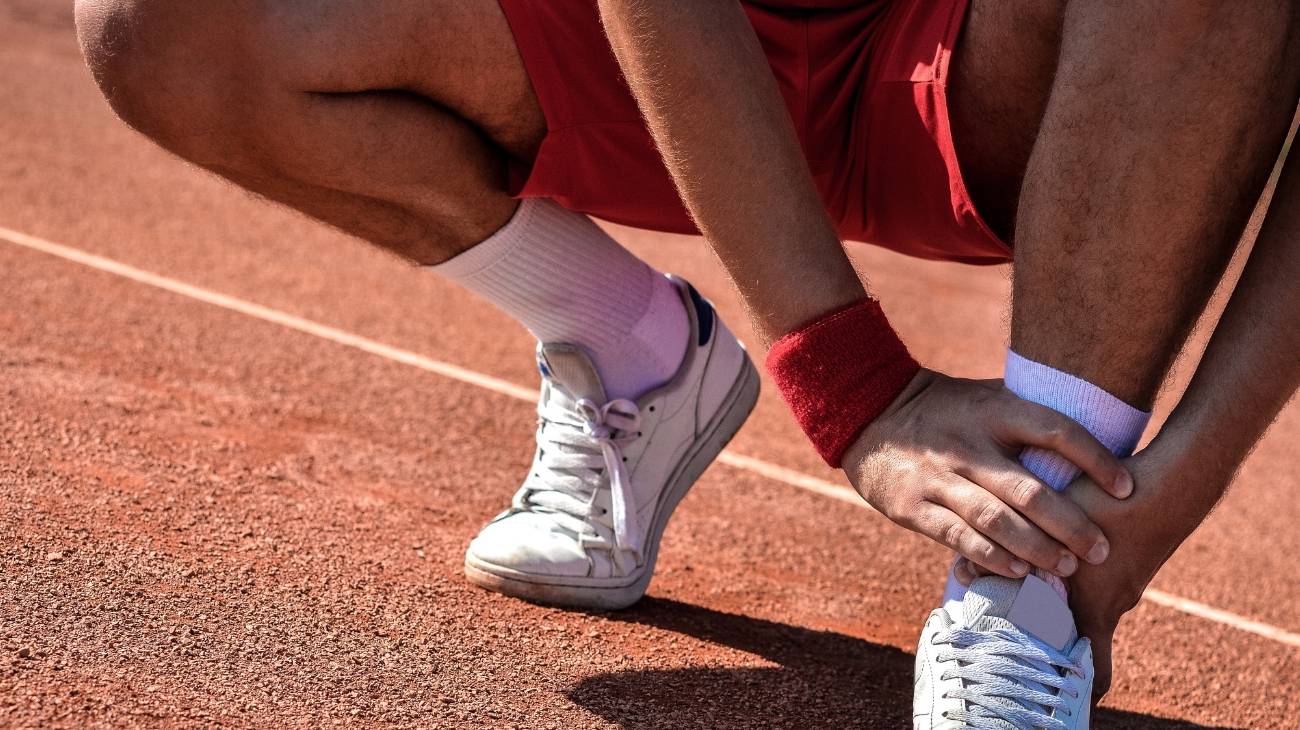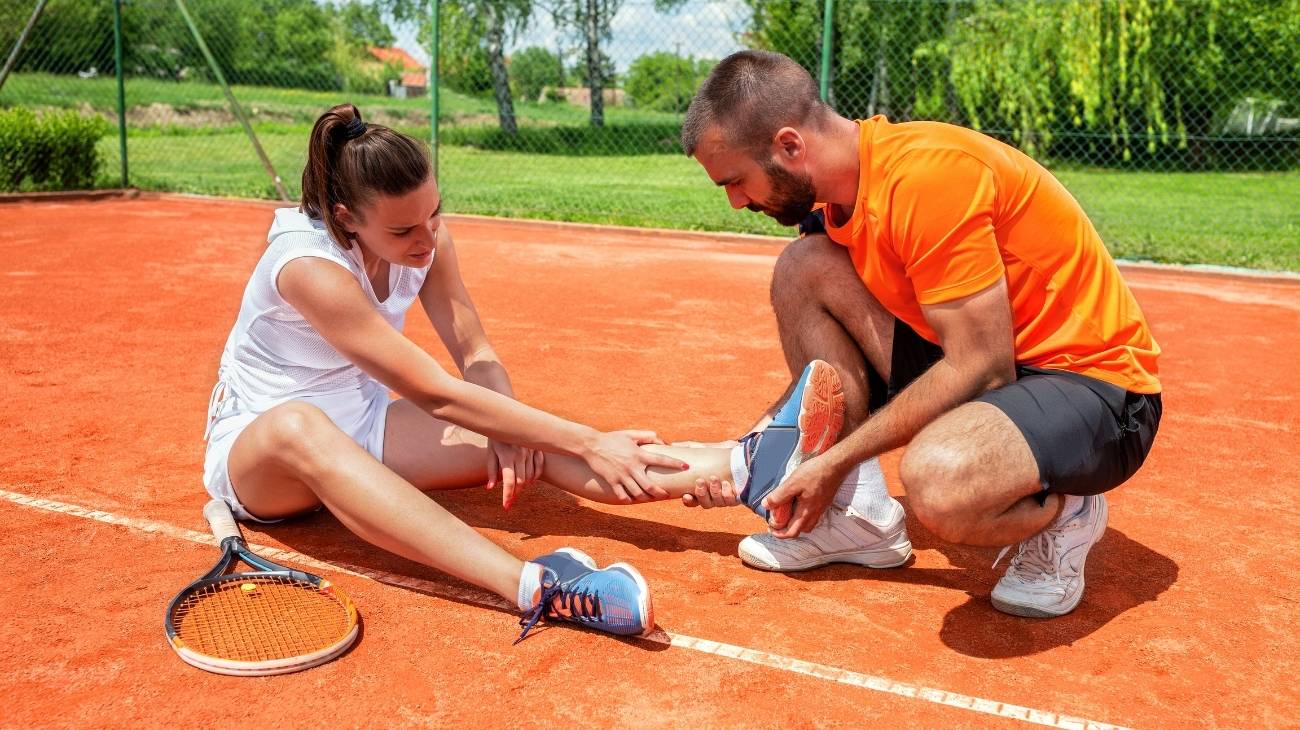The ankle and foot are essential for the support of the human body and in the sport of tennis much more. The risk of injury during tennis practice can be high due to the amount of movement that must be made. Jumping movements, running with sudden stops generate pathologies and overload injuries.
As the proper functioning of these joints is important for the practice of tennis, we invite you to learn about the most common injuries. We will also explain the simplest way to attend to acute injuries in tennis players with the RICE method. Let's see!
What are the most common types of ankle and foot injuries when we play tennis?
Keeping the ankle and foot joints in good physical condition to maintain adequate performance is essential. Tennis players are often injured in large part due to poor technique while practicing or in matches. Another common reason for injury is a lack of proper training.
There are several pathologies and injuries that can occur, but the most common in tennis are the following:
Sprains
This is one of the most common soft tissue injuries in tennis. Tennis is a sport where very fast and intense movements are made. Due to these movements, the ankle can be forced inwards or outwards, exceeding the elasticity of the ligaments. This causes injury to the hard fibres or ligaments that connect one bone to another.
The ligament most affected in tennis players is the external lateral one, due to the high impact that the practice of this sport generates. They are classified according to the state of severity in:
- Sprain grade I: In this type of sprain, the ligaments are only stretched, but not torn. The tennis player also presents slight to moderate pain and an increase in volume. At this point the ankle joint is still stable and the player can move it easily.
- Sprain grade II: This type of sprain is characterized by partial tearing of the ligaments. The person will feel a snap or dry noise accompanied by pain and mild to moderate bruising. The joint may be a little unstable.
- Sprain grade III: Here there is and total tearing of the ligaments and a dry sound will also be heard at the time of injury. There will be intense pain accompanied by a considerable increase in volume. The joint will be completely unstable and wobbly and you may hear a cracking sound when you try to move it.
Dislocation
Ankle dislocation is also very common in tennis. It usually occurs when a jump or sudden movement results in a fall or twisting movement. This causes the bone in the joint to dislocate or come out, resulting in severe pain, increased volume and the inability to move the joint.
In this case the ligaments also break completely, causing the talus to fall out of place. Although this is not very frequent in tennis, it can occur and its resolution is usually surgical.
Osteochondritis
It usually occurs after an injury such as dislocation or sprain where a fragment of cartilage is detached. It can cause sudden, very painful symptoms accompanied by swelling, decreased mobility and snapping of the joint. It may require surgical resolution which will serve to remove the loose bone fragments.
Ankle tendinitis
The ankle is a joint that is made up of many tendons. Among these we can find the flexors and extenders of the foot. Tendinitis is an inflammation of one or more tendons, the most common in tennis players is the Achilles tendon. It is produced by forced movements when running or jumping in a sudden way. Tears can also occur, causing severe pain, swelling, difficulty in moving the joint and crackling.
Bone fractures
Fractures at the ankle and foot level are caused by direct trauma, increased activity or sudden movements. This injury generates intense pain that increases especially when touching or moving the foot joint. It also causes an increase in volume with deformity, decreased movement and bruising.
Fracture due to overload
Stress fractures are small, hairline fractures that occur in any bone in the foot. They can be so small that they are very difficult to visualize on X-rays. They are caused by constant stress when doing intense sports training in tennis such as running or jumping a lot. This happens especially when the sportsman is not used to the activity or when he is new to tennis.
Plantar fasciitis
This is the inflammation of the plantar fascia and is due to an overload when running or jumping with the wrong shoes. It is also caused by malformations on the sole of the foot. This generates pain in the heel of the foot, which is accentuated in the morning and diminishes with daily activities.
Best products for recovery from tennis ankle and foot injuries
Bestseller
-
2 Ankle Compression Sleeve (Black/Gray)
£17,50 -
2 Ankle Compression Sleeve (Green/Navy)
£17,50 -
2 Ankle Compression Sleeve (Pink/Bordeaux)
£17,50 -
Ice Pack for Foot - Cold Therapy Socks (Black)
£21,95 -
Ice Pack for Foot - Cold Therapy Socks (Green)
£21,95 -
Ice Pack for Foot - Cold Therapy Socks (Pink)
£21,95 -
Microwavable Heated Slippers (Hearts)
£21,50 -
Microwavable Heated Slippers (Oxford)
£21,50 -
Microwavable Heated Slippers (Sport)
£21,50 -
Microwaveable Wheat Bag for Pain Relief (Hearts)
£17,50 -
Microwaveable Wheat Bag for Pain Relief (Oxford)
£17,50 -
Microwaveable Wheat Bag for Pain Relief (Sport)
£17,50 -
Sport Compression Socks (1 Pair) (Black/Gray)
£17,50 -
Sport Compression Socks (1 Pair) (Green/Navy)
£17,50 -
Sport Compression Socks (1 Pair) (Pink/Bordeaux)
£17,50
How to apply RICE therapy to treat ankle and foot injuries in tennis players?
When there are traumatic sports injuries that are not so severe, you can help with a very practical care therapy, RICE. RICE stands for Rest, Ice, Compression and Elevation. This therapy has been updated and the letter P for protection has been added, making it PRICE. However, RICE therapy is still the best known.
These are the steps in injury care:
- Protection: The first step is to offer protection to the injured party. A functional bandage, splint, joint support should be used to reduce the risk of another injury from any complication.
- Rest: Subsequently, the activity of the affected area should be reduced by means of relative rest. This is done by reducing movements, relieving the burden on the affected area for a few days. This rest should be for 48 hours and not exceed this time to avoid stiffness.
- Ice: Rest should be combined with the application of ice to reduce inflammation and pain in the affected area. Ice generates a local vasoconstriction that reduces blood flow locally. It should be applied for less than 20 minutes 6-8 times a day with compresses or gel packs.
- Compression: The next step is to apply a compressive bandage that will contain the inflammation in the affected area. It is necessary to use an elastic bandage that helps to fix the soft tissues of the injured part. This bandage will allow the activities to be carried out more safely and easily.
- Elevation: Finally, the affected limb must be elevated above the heart to facilitate venous return and relieve inflammation. This will reduce the blood pressure and avoid the palpitations that generate more pain.
References
- Fong, D. T. P., Ha, S. C. W., Mok, K. M., Chan, C. W. L., & Chan, K. M. (2012). Kinematics analysis of ankle inversion ligamentous sprain injuries in sports: five cases from televised tennis competitions. The American Journal of Sports Medicine, 40(11), 2627-2632. https://journals.sagepub.com/doi/abs/10.1177/0363546512458259
- Garrick, J. G., & Requa, R. K. (1988). The epidemiology of foot and ankle injuries in sports. Clinics in sports medicine, 7(1), 29-36. https://www.sciencedirect.com/science/article/abs/pii/S027859192030956X
- Chard, M. D., & Lachmann, S. M. (1987). Racquet sports--patterns of injury presenting to a sports injury clinic. British journal of sports medicine, 21(4), 150-153. https://bjsm.bmj.com/content/21/4/150.short
- Trepman, E., Mizel, M. S., & Newberg, A. H. (1995). Partial rupture of the flexor hallucis longus tendon in a tennis player: a case report. Foot & Ankle International, 16(4), 227-231. https://journals.sagepub.com/doi/abs/10.1177/107110079501600412
- Cutts, S., Obi, N., Pasapula, C., & Chan, W. (2012). Plantar fasciitis. The Annals of The Royal College of Surgeons of England, 94(8), 539-542. https://publishing.rcseng.ac.uk/doi/full/10.1308/003588412X13171221592456
- Kibler, W. B., & Safran, M. (2005). Tennis injuries. Epidemiology of Pediatric Sports Injuries: Individual Sports, 48, 120-137. https://www.karger.com/Article/Abstract/84285
- Pluim, B. M., Staal, J. B., Windler, G. E., & Jayanthi, N. (2006). Tennis injuries: occurrence, aetiology, and prevention. British journal of sports medicine, 40(5), 415-423. https://bjsm.bmj.com/content/40/5/415.short
- Dines, J. S., Bedi, A., Williams, P. N., Dodson, C. C., Ellenbecker, T. S., Altchek, D. W., ... & Dines, D. M. (2015). Tennis injuries: epidemiology, pathophysiology, and treatment. JAAOS-Journal of the American Academy of Orthopaedic Surgeons, 23(3), 181-189. https://journals.lww.com/jaaos/Fulltext/2015/03000/Tennis_Injuries__Epidemiology,_Pathophysiology,.6.aspx
- Nigg, B. M., & Segesser, B. (1988). The influence of playing surfaces on the load on the locomotor system and on football and tennis injuries. Sports medicine, 5, 375-385. https://link.springer.com/article/10.2165/00007256-198805060-00003















